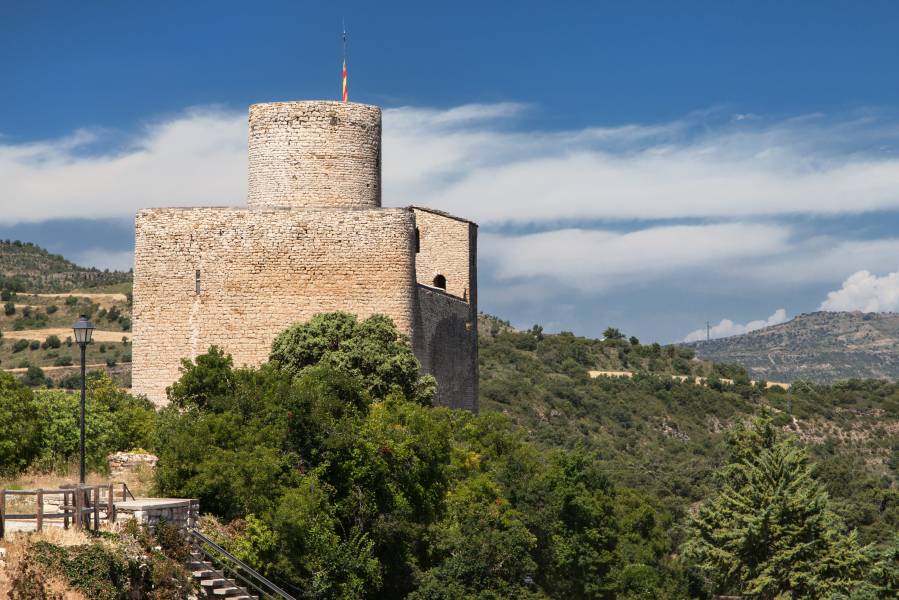Historical notes of Castell de Mur
The first documented reference to Castell de Mur dates from
969 . The current municipality was a
border territory between Christians, but, unlike what one might think, the municipality exercised more of a feudal territory than of resistance, since the
Montsec mountain range already exercised a natural protection function.
The municipality as we know it was formed at the beginning of the 70s from the union of the
municipalities of Mur and Guàrdia de Noguera . Both municipalities belonged to the
count of Pallars Jussà and came under the control of Arnau Mir de Tost, in the middle of the 11th century. From there, their trajectories diverged when Guardia de
Tremp was ceded to the chapter of Tremp and later to the Crown, while the Murs became feudatories.
For its part, the castle was
descended from the Murs as castlans, a family that became royal feudatories and lords of the castle of the barony of Mur, from the end of the 11th century. Some characters from this lineage were the bishop of VIc, Bernat de Mur, and the troubadour Guillem de Mur (XIII).
What can you visit in Castell de Mur during your stay in a holiday cottage
The most important architectural element is the castle (11th century) , an impressive fortification built on the rock and in a fairly good state of conservation. In the castle you can visit the tower, Count Pallars' room, a large dining room and the armory, among other rooms.
Next to the same castle, stands the old Augustinian canonical of Santa Maria (11th century) , which exerted a great influence until the s. XIV, at which point a decline begins that will turn it into a collegiate church, losing all its privileges in 1851. The wall paintings that decorated the apse of this church are one of the most important examples of Romanesque art Catalan , which are currently in the National Art Museum of Catalonia.
Very close to the castle of Mur, stands the imposing castle of Guàrdia de Noguera , origin of the town and the municipality of the same name. Around it, stretched the primitive village of Guàrdia de Tremp, of which only a few remains remain and the old parish church of Sant Feliu de Guàrdia, the castle's chapel.
You can also visit the church of Santa Llúcia de Mur (11th century) which, despite its continuous transformations, still retains the Romanesque nave. In the Gothic art section of the National Museum of Art of Catalonia there are two tables that were part of an altarpiece depicting scenes from the life of Saint Llúcia.
And if you go to the town of Cellers , don't miss the visit to the church of Sant Joan Baptista , where the old priory of Sant Miquel de Cellers used to be.
Things to do around your holiday cottage
Castell de Mur is located in a valley of the Serra del Montsec, from where numerous excursions can be started on foot, by bike or on horseback . We highlight the walking route that goes from the town of Cellers to the ravine of the forest, passing by the Regina rock, highly valued by climbers.
What you can't miss
You can't miss enjoying the culinary specialties of Pallars Jussà and its typical products such as tupí cheese, mushrooms, xoliç, secallona and the wine of the Costers del Segre appellation of origin.
